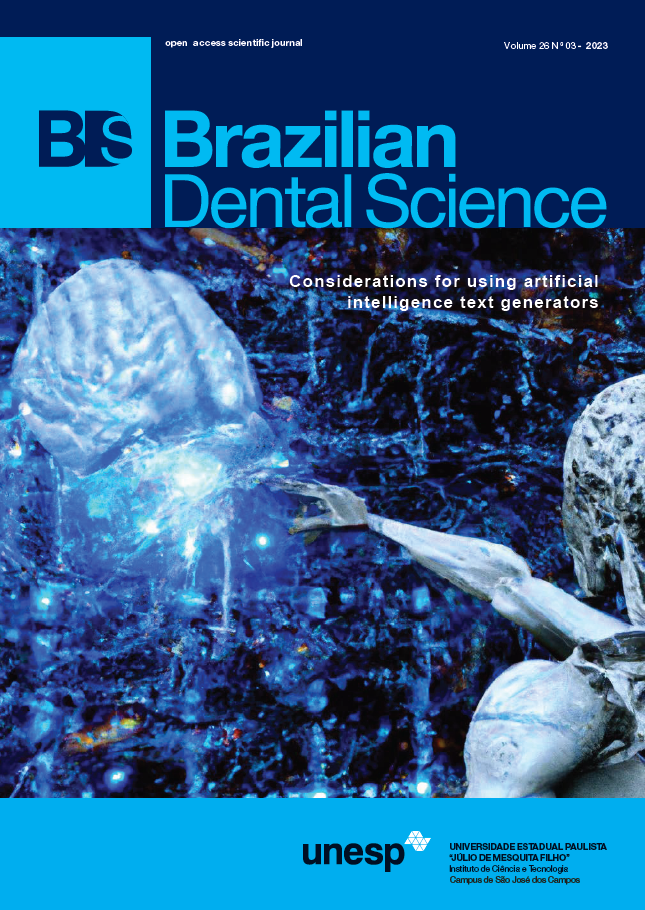Suckermouth catfish bone extract as bone graft raw material for bone-healing promotes bone growth in bone loss
DOI:
https://doi.org/10.4322/bds.2023.e3791Resumo
Objective: This study aimed to evaluate the properties of suckermouth catfish bone extract, which allows it to be adopted as a raw material for bone graft following its graft in an artificial defect of a rat model. Material and Methods: Hydroxyapatite (HA) from suckermouth catfish bone extract was characterized using Fourier-transform infrared spectroscopy (FTIR), and its toxicity was evaluated by Brine Shrimp Lethality Test (BSLT). This material was grafted on artificial defects in rats’ femoral bones, which were observed immunologically by Enzyme-linked immunosorbent assay (ELISA) after one week and four weeks, and radiographically in the second week, and histologically in the second and fourth weeks. Results: FTIR shows that this material consists of phosphate, hydroxyl, and carbonate groups, while the BSLT results show that this material is not toxic. Observations by ELISA showed an increase in the expression of Tumor necrosis factor alpha (TNF-a) in defects with HA in the fourth week. Radiographically the defect did not show closure in the second week. In contrast, histological analysis showed a better bone healing process in the defect, which was applied with the HA of the suckermouth catfish bone. Conclusion: The HA extracted from the suckermouth catfish bone has beneficial properties as an alternative to bone graft raw material and, more investigated needed to support this biomaterial to be used in the treatment of bone loss.
KEYWORDS
Hydroxyapatite; Bone graft; Bone defect; Bone healing; Fourier Transform Infrared Spectroscopy.
Downloads
Downloads
Publicado
Como Citar
Edição
Seção
Licença
TRANSFERÊNCIA DE DIREITOS AUTORAIS E DECLARAÇÃO DE RESPONSABILIDADE
Toda a propriedade de direitos autorais do artigo "____________________________________________________________________" é transferido do autor(es) para a CIÊNCIA ODONTOLÓGICA BRASILEIRA, no caso do trabalho ser publicado. O artigo não foi publicado em outro lugar e não foi submetido simultaneamente para publicação em outra revista.
Vimos por meio deste, atestar que trabalho é original e não apresenta dados manipulados, fraude ou plágio. Fizemos contribuição científica significativa para o estudo e estamos cientes dos dados apresentados e de acordo com a versão final do artigo. Assumimos total responsabilidade pelos aspectos éticos do estudo.
Este texto deve ser impresso e assinado por todos os autores. A versão digitalizada deverá ser apresentada como arquivo suplementar durante o processo de submissão.




























